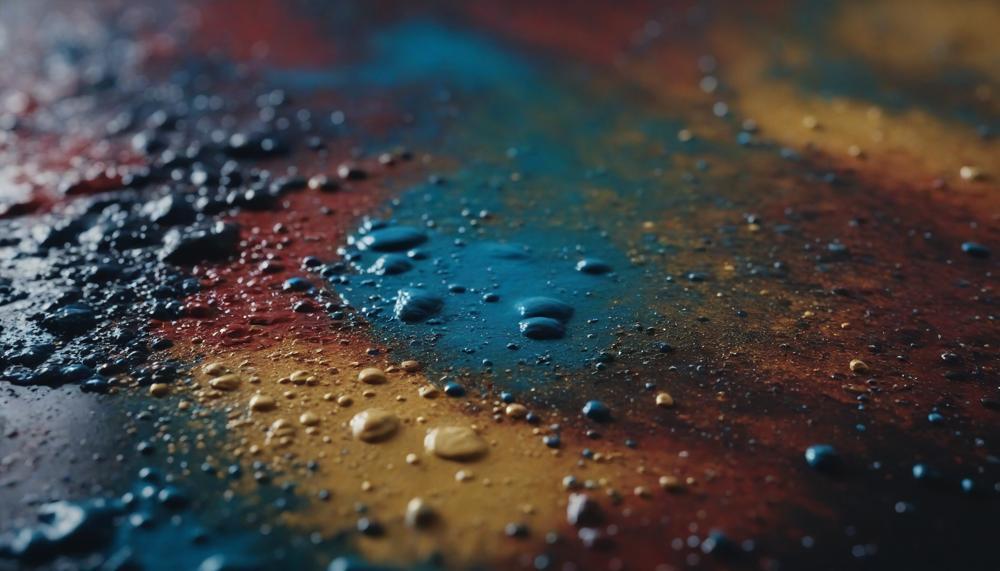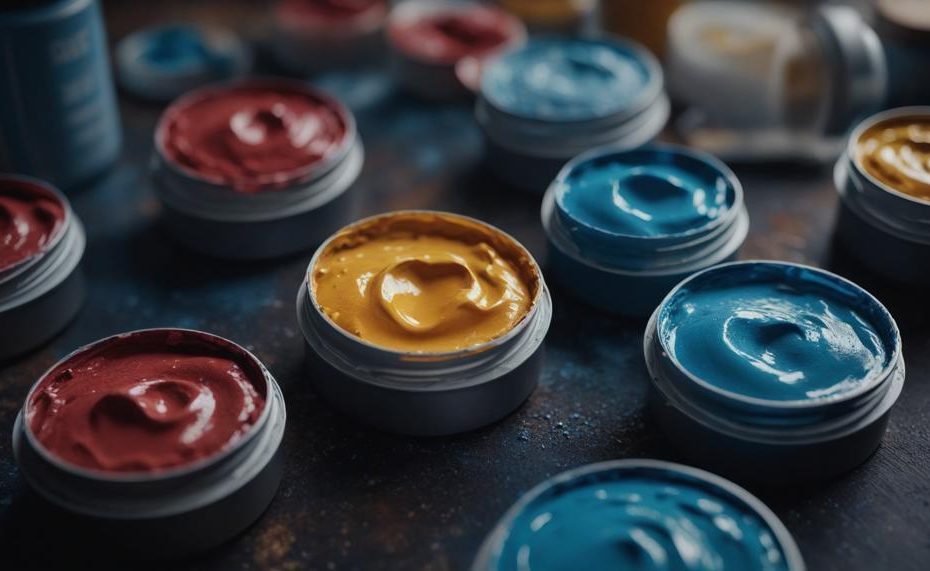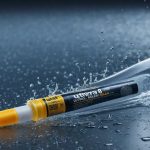Yes, you can mix acrylic paint with PVA glue. This combination offers a versatile and cost-effective way to achieve a creamy consistency that’s perfect for various painting techniques, especially acrylic pouring. Whether you’re a seasoned artist or a beginner, blending these two materials can enhance your creative projects by providing a smoother application and improving paint adhesion on different surfaces. Here’s what you need to know about mixing acrylic paint with PVA glue:
- Create Your Own Pouring Medium: By using PVA glue, you can easily make a custom pouring medium that rivals commercial products.
- Perfect Consistency: The mixture helps achieve a heavy cream-like consistency, which is ideal for pouring and fluid art.
- Cost-Effective: PVA glue is an affordable alternative to store-bought pouring mediums, saving you money without compromising quality.
- Enhanced Adhesion: This blend improves paint adhesion, making your artwork more durable and long-lasting.
- Customizable: Adjust the ratio of glue to paint to find the perfect balance for your specific project needs.
Mixing acrylic paint with PVA glue opens up new possibilities for your artwork, allowing you to experiment with textures and effects that are both stunning and budget-friendly. Dive into this creative approach and discover how a simple blend can transform your artistic expression.
Table of Contents
How To Seal Acrylic Paint With PVA Glue
Yes, you can use PVA glue as a sealer for acrylic paint, but there are some key considerations and steps to follow for optimal results.
| Step | Description | Notes |
| Surface Preparation | Clean and dry the surface | Ensures proper adhesion |
| Application Method | Use foam or soft-bristled brush | Prevents streaks and brush marks |
| Layering | Apply thin, even layers | 2-3 layers recommended |
| Surface Suitability | Best on porous surfaces | Test on non-porous surfaces |
| Finish and Durability | Glossy finish, not waterproof | May alter paint appearance |
What Can I Use To Seal Acrylic Paint?
To seal acrylic paint and protect it from damage, you can use several products that offer durability and longevity. Here are the main options:
| Product Type | Description | Application Tips |
| Clear Acrylic Sealers | These water-based sealers form a clear, protective layer over acrylic paint. They are available in various finishes, such as matte, satin, and gloss. | Ensure the surface is clean and dry. Apply in thin, even coats, allowing each layer to dry completely before adding the next. |
| Polyurethane Sealers | Polyurethane sealers provide a durable finish that is resistant to moisture and UV rays. Available in oil-based and water-based formulas. | For best results, use a high-quality brush or spray. Apply in well-ventilated areas and follow the manufacturer’s instructions for drying times. |
| Sealing Sprays | Sealing sprays offer a quick and convenient way to protect acrylic paint, ideal for smaller projects or detailed work. | Hold the can at a consistent distance and spray in light, even coats. Avoid over-saturating the surface to prevent drips and runs. |
Using these products ensures your acrylic paint is well-protected from environmental damage, such as UV rays and moisture. Always choose a sealer compatible with acrylic paint and follow the application instructions for the best results.
Can You Use PVA Glue Instead of Varnish?
The short answer is yes, you can use PVA glue instead of varnish when mixing with acrylic paint, but the results will vary significantly.
Difference Between Using PVA Glue and Varnish with Acrylic Paint
| Aspect | PVA Glue | Varnish |
| Mixing and Consistency | PVA glue mixes smoothly with acrylic paint, creating a stable and consistent blend that helps achieve even layers. | Varnish can be mixed with acrylic paint, but it may alter the paint’s texture and consistency, sometimes resulting in a thicker mixture. |
| PH Level | PVA glue has a neutral PH, which does not interfere with the integrity or longevity of the paint. | Varnish typically has a different PH, which might affect the paint’s durability over time. |
| Finish | Using PVA glue results in a matte or semi-matte finish, preserving the original texture of the paint. | Varnish often provides a glossy finish, which can be undesirable for certain artworks that require a matte appearance. |
| Application | PVA glue is easy to apply and control, making it ideal for creating smooth layers without brush marks. | Varnish can be more challenging to apply evenly, and it might leave streaks or alter the paint’s final appearance. |
| Durability | PVA glue does not affect the durability of the acrylic paint, ensuring long-lasting results. | Varnish can enhance the durability but may also change the texture and appearance, potentially leading to undesired effects. |
| Cost | PVA glue is generally more affordable and accessible compared to varnish. | Varnish is often more expensive and might not be cost-effective for all projects. |
Can You Seal Painted Rocks With PVA Glue?
Yes, PVA glue is an effective sealant for painted rocks. It provides a protective layer that helps prevent chipping, fading, and damage to the paint. Here’s why:

| Properties | Details | Benefits |
| Water-Based Adhesive | PVA glue is a water-based adhesive that becomes transparent when dry.Dries clear, maintaining the original appearance of the paint. | |
| Strong Bonding Properties | Creates a durable bond with the painted surface. | Prevents chipping and fading. |
| Affordability | Readily available and inexpensive. | Cost-effective compared to other sealants. |
| Multiple Thin Layers | Recommended to apply several thin layers instead of one thick layer. | Ensures better coverage and protection. |
| Clean and Dry Surface | Must apply to a clean, dry surface. | Ensures proper adhesion and effectiveness. |
| Compatibility | Works well with acrylic paints. | Test a small area first if using other types of paint. |
While PVA glue is effective, ensure you choose a high-quality, pure PVA glue without additives for the best results. Proper application and surface preparation are crucial to achieving optimal sealing and protection for your painted rocks.
Can You Use Glue as a Top Coat?
The short answer is yes, you can use glue as a top coat for sealing acrylic paint, but it comes with significant limitations. While polyvinyl acetate (PVA) glue, commonly known as white glue or school glue, can provide a protective layer over acrylic paint, it’s not the most reliable option for long-term preservation. Here are the key considerations:
- Adhesion: PVA glue adheres well initially but may not bond as effectively as specialized sealants designed for acrylic paint, potentially leading to peeling or cracking over time.
- Durability: Compared to varnish or resin, PVA glue lacks durability. It may degrade when exposed to moisture or frequent handling, compromising the protection of your artwork.
- Colour Change: PVA glue can dry with a slight yellow tint, which may alter the colours of the acrylic paint beneath, affecting the overall appearance of the piece.
- UV Protection: PVA glue does not provide UV protection, which is essential for preventing the fading and discolouration of acrylic paint when exposed to sunlight.
Mod Podge vs PVA Glue
The primary difference between Mod Podge and PVA glue lies in their composition and versatility. Mod Podge is a unique sealer glue, while PVA (polyvinyl acetate) glue is commonly known as white glue or wood glue. Here’s a detailed comparison:
| Feature | Mod Podge | PVA Glue |
| Composition | Contains PVA plus a clear acrylic sealer. | Made of polyvinyl acetate. |
| Uses | Works as a glue, sealer, and finish for various materials. | Ideal for porous materials like wood, paper, and fabric. |
| Versatility | Can be used on almost any surface including plastic, glass, and ceramics. | Best suited for porous surfaces. |
| Mixing with Acrylic Paint | Yes, can be mixed with acrylic paint. | Yes, can be mixed with acrylic paint. |
| Cost | Generally more expensive. | More affordable. |
Both Mod Podge and PVA glue can indeed be mixed with acrylic paint, enhancing the paint’s adhesion and flexibility. However, Mod Podge offers additional sealing and finishing properties due to its acrylic component, making it more suitable for projects requiring a durable, glossy finish.
If cost is a concern, you can create a Mod Podge substitute by mixing three parts PVA glue with one part water.
Conclusion
Mixing acrylic paint with PVA glue unlocks creative potential for artists at any level. This blend offers a silky, heavy-cream consistency perfect for techniques like acrylic pouring, giving your artwork a smooth and lasting finish.
By combining these materials, you can craft a custom pouring medium that rivals commercial products at a fraction of the cost. This not only improves paint adhesion but also enhances the flexibility and durability of your pieces, making them more resistant to cracking and peeling over time.
PVA glue acts as an affordable alternative to traditional pouring mediums. It allows you to control the viscosity of your paint, opening up a range of textures and effects that can add depth and dimension to your art. Adjusting the ratio of glue to paint lets you tailor the mixture to your specific needs, whether you’re working on canvas, wood, or other porous surfaces.
In essence, mixing acrylic paint with PVA glue is a budget-friendly, versatile technique that elevates your art. It’s ideal for experimenting with new textures and effects, helping you achieve a professional look without the professional price tag.






